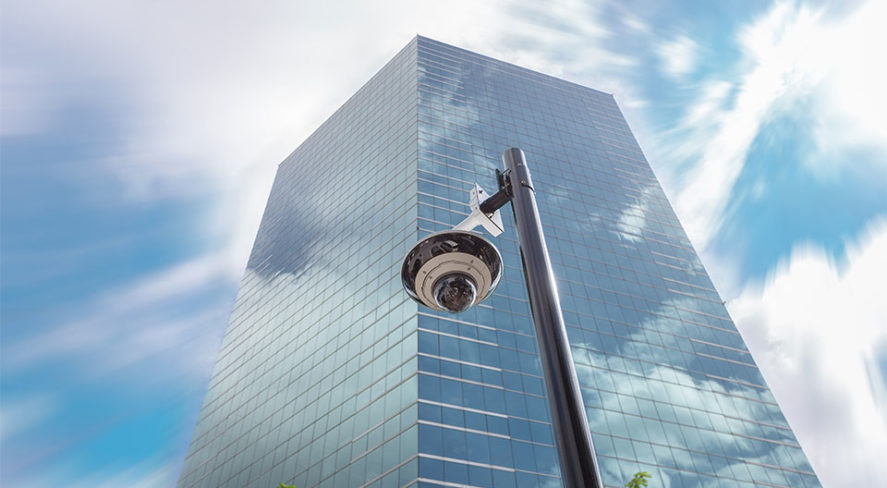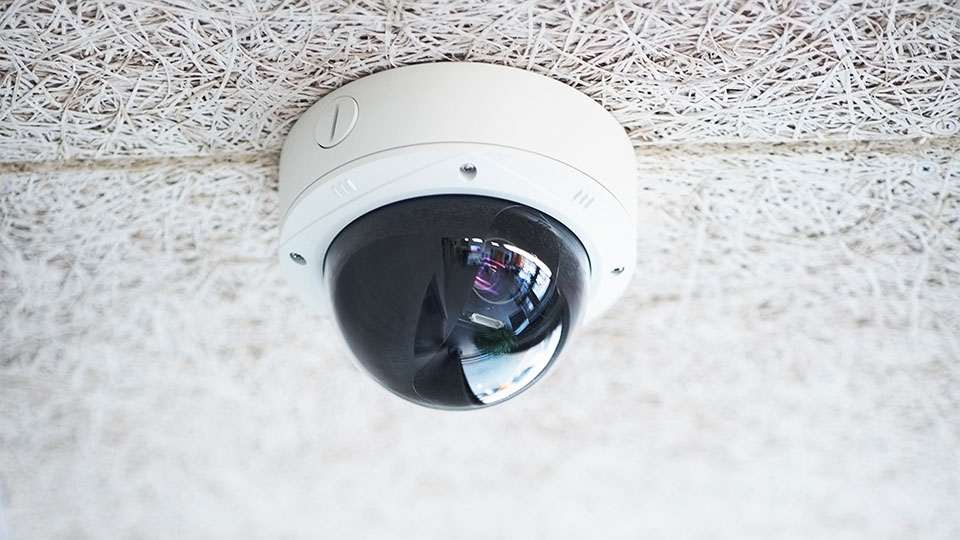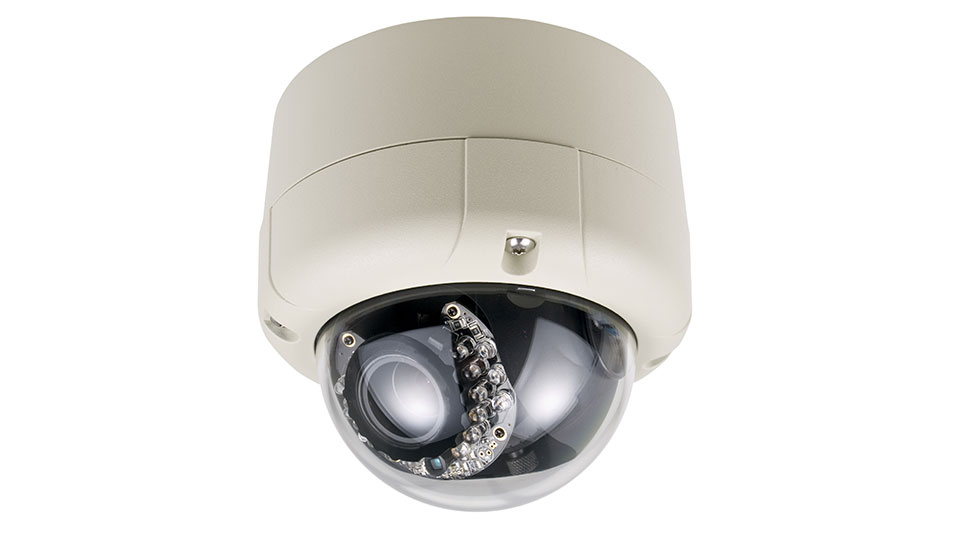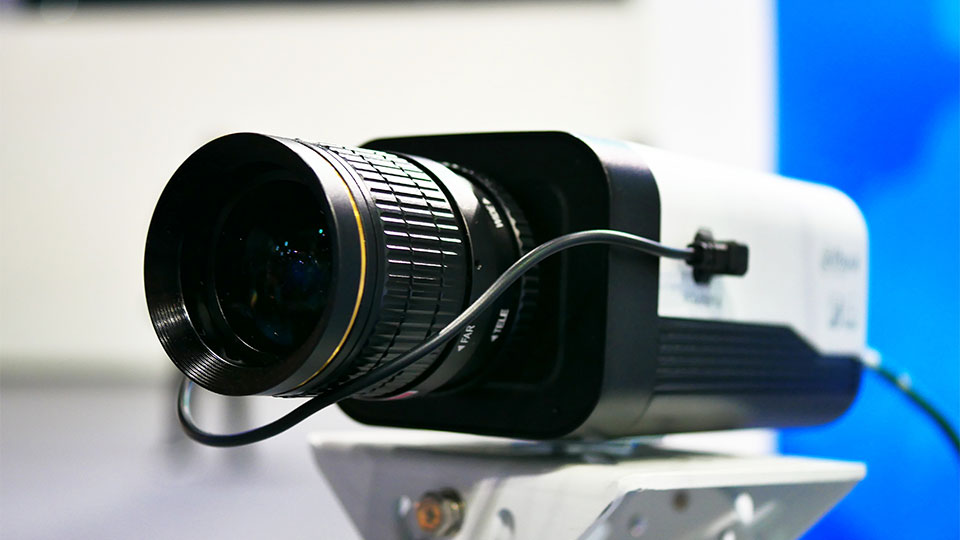A Guide to Essential Types of Security Cameras and When to Use Each Type of Camera

Surveillance cameras (sometimes also called security cameras and even occasionally still referred to as CCTV cameras) come in all different shapes and sizes and with many different capabilities and functional design, allowing for high performance in various applications.
Security cameras can be organized by multiple categories and can include features from multiple categories:
Category 1: Movement
- Fixed Cameras
- Pan/Tilt/Zoom (PTZ) Cameras
- Virtual PTZ Cameras
A fixed camera functions in a static position for the lifetime of the device’s deployment. This feature provides assurance that the subject, within the predetermined frame, is perpetually surveilled.
- Applications: Continuous and fixed areas of focus
- Advantages: Reliability in image framing during recording
- Disadvantages: Footage just outside of the fixed frame cannot be captured.
PTZ cameras are agile and able to adjust the field of view, by a remote operator, using software applications or other control devices. This functionality allows for different and very specific shots that allow the user to track and identify subjects of interest with greater control.
- Applications: Coverage of large spaces. PTZ cameras are best deployed as a roving camera when other fixed angles also provide continuous coverage of specific areas of importance
- Advantages: Angle flexibility and an ability to track specific subjects in a live situation, the zoom feature provides focused detail, while wide shot provides overall coverage.
- Disadvantages: Subjects surveilled simultaneously may not be able to stay in frame with the same detail if they diverge.
Virtual PTZ cameras combine the benefits of both fixed and PTZ camera types through software. The cameras include multiple fixed lenses or sensors, typically positioned to achieve a 360-degree view. When an operator views the live or recorded shot, each of the streams are tethered together as a single seamless image. A virtual PTZ camera user can manipulate the controls to pan, tilt or zoom in on specific subjects as if it were a standard PTZ camera, while at the same time continuously record the entire shot without risking the loss of the larger video frame outside of the PTZ-controlled image selection.
- Applications: Coverage of large public spaces
- Advantages: A great solution for expanded coverage where the installation of multiple cameras may not be possible
- Disadvantages: Software dependence may dictate the level of feature functionality, depending on the video management system used. Image distortion, as with all stitched and 360-degree cameras, is a factor to consider.
Category 2: Size & Shape
- Box/Bullet/Shoebox Cameras
- Dome Cameras
- Modular Cameras
Box/bullet/shoebox cameras can be used in a large variety of situations. With overt positioning they often work in efforts to discourage unwanted activity. Subjects know they are under surveillance.
- Applications: These cameras are suitable for both outdoor and indoor locations.
- Advantages: The ability to focus on objects more deliberately. Some offer an option to customize lens choice. Lens options allow for greater flexibility in achieving very specific shots. Depending on the lens, both tightly focused and wide positions are possible, as well as anywhere in between.
- Disadvantages: Installations are commonly reliant upon more overt brackets, fittings and network attachments. The obvious positioning of the focused direction.
Dome cameras can be installed seamlessly with no exposed cabling and an unobtrusive design.
- Applications: Used widely for both indoor and outdoor locations
- Advantages: Flexibility during installation and discreet positioning of the focused direction, as many domes are tinted
- Disadvantages: Less flexibility in lens choice, compared to box cameras where lens options exist.
Modular cameras offer great customizable installation designs; they can be mounted inconspicuously in vehicles, as part of covert devices, and worn by individuals.
- Applications: Customizable to fit many specific and temporary situations, such as investigative areas of interest
- Advantages: Small size and clandestine placement ability
- Disadvantages: Less resilient design and image quality, compared to other security camera styles
Category 3: Specialties
- Low-Light Cameras
- High Megapixel Cameras
- Thermal Cameras
Low light cameras can function in near total darkness; because they use infrared illuminators built in to the device surrounding the lens, or as an added accessory mounted near the camera, recordings are possible during suboptimal lighting situations. 
- Applications: Best to be used in any low/unlit, or dark, location where additional lighting is not a possibility
- Advantages: Provides usable detailed images without the need of daylight, while consuming less energy than needed for an accompanying continuous powered lighting source
- Disadvantages: Often, the cameras using this technology display images in black and white, instead of color, which is sometimes a disadvantage–however, black and white imaging offers far superior image contrast.
High-megapixel cameras offer heightened detail and clarity. Often these cameras are used for forensic purposes, as opposed to live viewing. The enhanced detail allows users to use one large master shot to cover multiple areas of interest at the same time, which can be examined specifically and simultaneously, without image loss at any other areas of interest within the master shot. 
- Applications: Construction sites, large open spaces and large events – including sports, parades and concerts
- Advantages: Greater image quality and the ability to cover a lot of space, with fewer physical installations
- Disadvantages: With enhanced image quality, storage space is also increased, these cameras rely on their own dedicated network video recorder.
Thermal cameras offer capture of subjects undetectable to the human eye. During a variety of lighting conditions or obstruction, these cameras offer the ability to detect emitted or reflected heat from objects and people.
- Applications: Low-visibility scenarios, such as wooded or foggy conditions outdoors, or identifying inanimate objects, such as gases
- Advantages: Ideal during dark and blocked conditions
- Disadvantages: Details of subjects are limited to heat, instead of optical clarity.
Category 4: Housing
- Interior Cameras
- Exterior Cameras
- Damage-Resistant Cameras
Interior camera housings are designed to unobtrusively fit inside of spaces where they will be seen by people inside of those spaces. With less prominent footprints, they complement the aesthetics of the room. These cameras are less complicated to install, compared to their exterior counterparts, and generally do not require additional accessories, such as mounting brackets.
- Applications: Most indoor locations
- Advantages: Very flexible installation options, for most conditions, and service
- Disadvantages: Less resistant to damage
Exterior camera housings offer the ability to protect a camera’s interior components from normal exterior wear and tear, as well as some weather conditions. Typical of this style are enclosures made of rust-proof metals. Accessories often include mounts to accommodate obstacles, such as signage or walls, or fit unique situations such as poles, as well as visors or tinted protective glass, to protect from harsh lighting conditions.
- Applications: Any outdoor location
- Advantages: Condition- and vandal-resistant
- Disadvantages: Heavier and larger, compared to interior versions
Damage-resistant camera housings offer various levels of damage resistance beyond standard exterior cameras, depending on the specific feature offered. Some resist extreme vandalism, water, weapons, heat and cold, as well as a variety of other natural or man-made factors that would typically lead to device failure. Though the varieties of damage resistant cameras are vast, typical commonalities they share are their fortified housings.
- Applications: Locations prone to heavy wear and tear, prone to violent damage or installed in specialized locations
- Advantages: An ability to continuously record during moments of physical distress to the device
- Disadvantages: Typically, bulkier housing types offer less conspicuousness, as well as less flexibility for installations and service.
